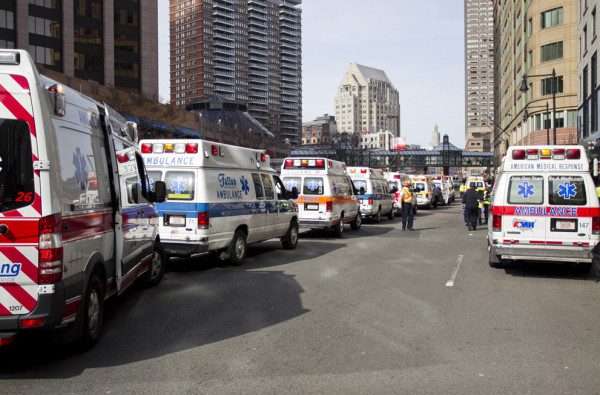 1)Â Â Â Â Â The timing is also a little peculiar because hospitals are going through other major challenges such as the Affordable Care Act, Meaningful Use and transition to ICD10 in addition to these requirements. It is going to be a rough road for the U.S. Health Care industry for the next several years at least.
1)Â Â Â Â Â The timing is also a little peculiar because hospitals are going through other major challenges such as the Affordable Care Act, Meaningful Use and transition to ICD10 in addition to these requirements. It is going to be a rough road for the U.S. Health Care industry for the next several years at least.
2)Â Â Â Â Â TJC had attempted to incorporate more strenuous Emergency Management and Disaster Preparedness Standards in 2008, but were rebuffed by industry and pressured not to score the changes. More on this Here.
3)     Because many of these requirements are already specified in guidance from TJC, obtaining accreditation has served as a proxy for this level of readiness. It is very evident from almost every major disaster since Katrina (including Sandy) that hospitals have not been able to voluntarily comply with the guidance as long as it was worded “Should†instead of “Shallâ€.
4)Â Â Â Â Â Given the trend toward Mergers and Acquisitions in Healthcare as ACOs prepare to meet requirements for ACA, the complexity and difficulty of developing unified Emergency Management Plans increases geometrically with the number of facilities in the system. Although most will probably have some sort of certification and accreditation, integration is key to the ability to provide a high quality, safe care and secure environment for all stakeholders (Patients, Staff and Visitors); accreditation is necessary but not sufficient.
Our review of the Public Comments to the Proposed Rule so far today revealed a few categories of comments:
Many individual comments have come in regarding the increased testing requirements for generators on full load with higher frequency: and the majority of remarks were negative and questioned the effectiveness and need. Our take on this is:
a)     The underlying objective is to ensure that the hospital can continue operations in the event of an emergency. Loss of electrical power places the most vulnerable patients in mortal danger. This was a key lesson learned in Katrina that cost scores of lives and yet, given a solid week of warning, Langone MC was forced to evacuate their most fragile patients (on life support) down darkened stairways as the building flooded. The reason: Generators had been moved above the floodplain, but the associated fuel pumps had not, so there was a catastrophic loss of electricity when the fuel pumps flooded. Those who argue that increased generator testing would not have solved this problem are right – as the old saying goes: “You can’t fix XXXXXXâ€.
b)Â Â Â Â Â The fact that so many facility engineers raised this objection shows the siloed nature of current efforts; it appears from the public comments that anything that comes in related to Emergency Management is pushed to Facility Engineering. We would argue that the Enterprise Risk Manager or executive in charge of Emergency Management would be the responsible party to ensure that all components of the All Hazards Plan are addressed. These proposed changes are also meant to provide higher visibility and responsibility, which will require much more attention at the Executive level. Making this part of the CoP is designed raise the level of awareness and participation at the C-Suite level. Our experience has been that without a strong executive sponsor, these types of initiatives die of apathy.
 In an effort to understand the political appetite for this Proposed Rule, we contacted All Members of Congress and the Senate who should have an intense interest successful implementation of this rule: the House and Senate Homeland Security subcommittees, the Senate subcommittee on Aging, among others. To our surprise there was very little awareness of the Proposed Rule having been introduced, and less interest. Despite dozens of calls and at least three requests for comment (0108 Dear Representative, Follow Up, Last Call) to the members and their offices (Member, Chief of Staff, Press Secretary), we were unable to get any written comment from any member of Congress or the Senate related to CMS-3178-P. Maybe we need to hire a lobbyist to warrant the courtesy of a response.
In an effort to understand the political appetite for this Proposed Rule, we contacted All Members of Congress and the Senate who should have an intense interest successful implementation of this rule: the House and Senate Homeland Security subcommittees, the Senate subcommittee on Aging, among others. To our surprise there was very little awareness of the Proposed Rule having been introduced, and less interest. Despite dozens of calls and at least three requests for comment (0108 Dear Representative, Follow Up, Last Call) to the members and their offices (Member, Chief of Staff, Press Secretary), we were unable to get any written comment from any member of Congress or the Senate related to CMS-3178-P. Maybe we need to hire a lobbyist to warrant the courtesy of a response.
The timeline for Public Comments has been extended until the end of March and we have seen a flurry of Comments in the last few days by organizations and other groups with an interest. We will continue to follow this and post our comments by the end of the period.






0 Comments